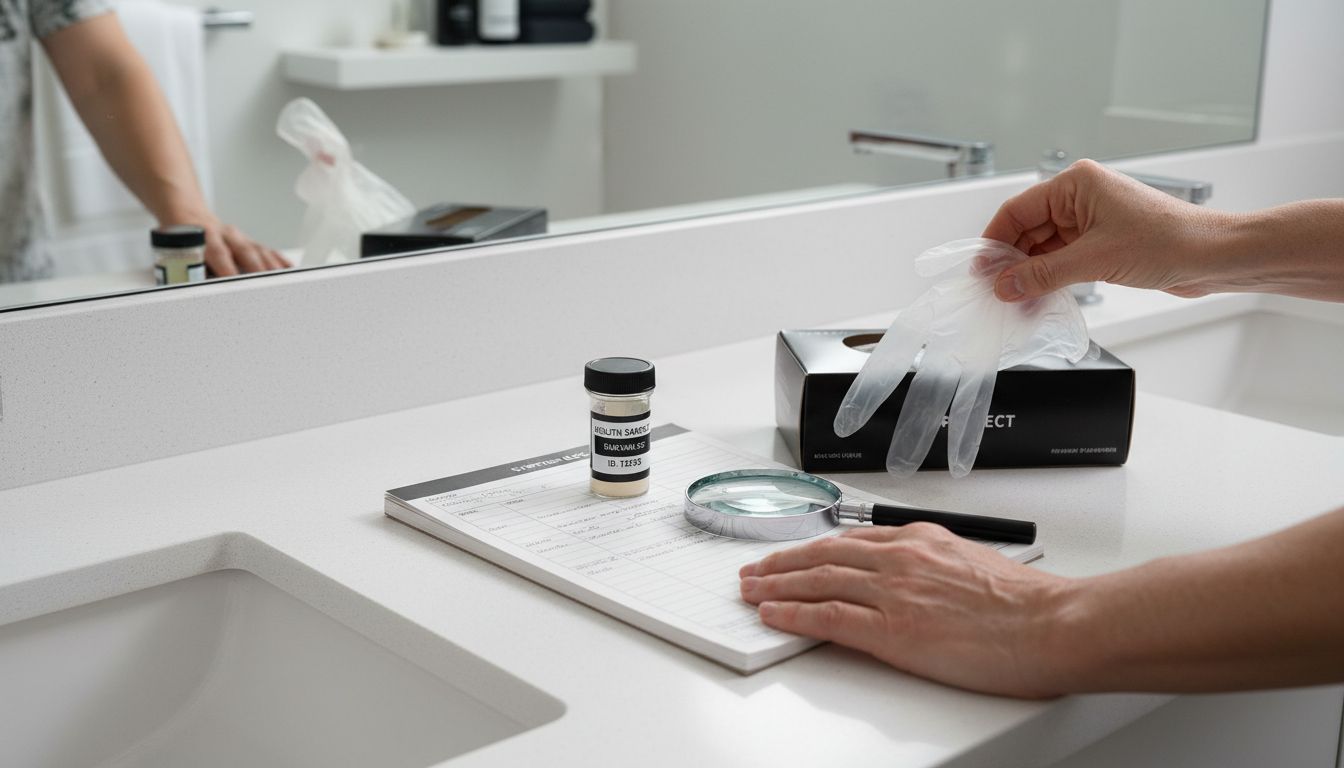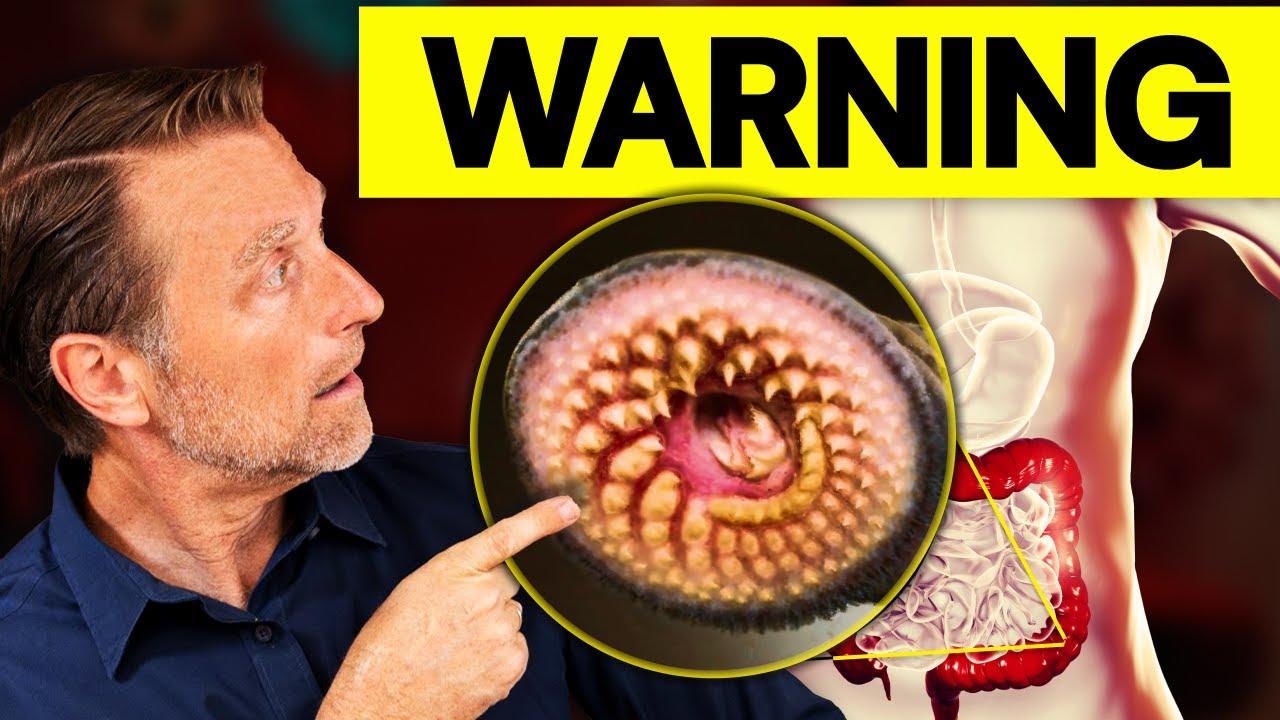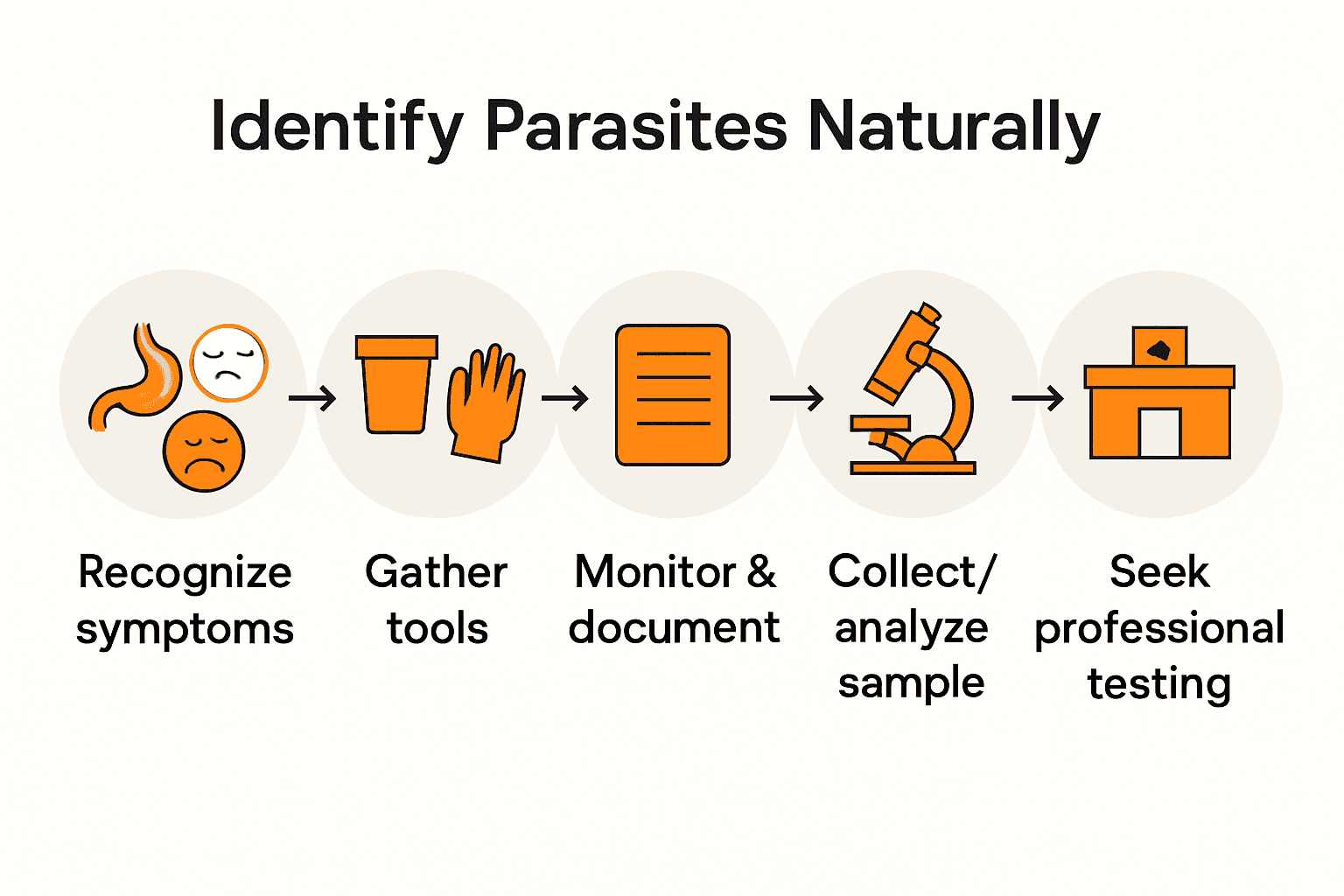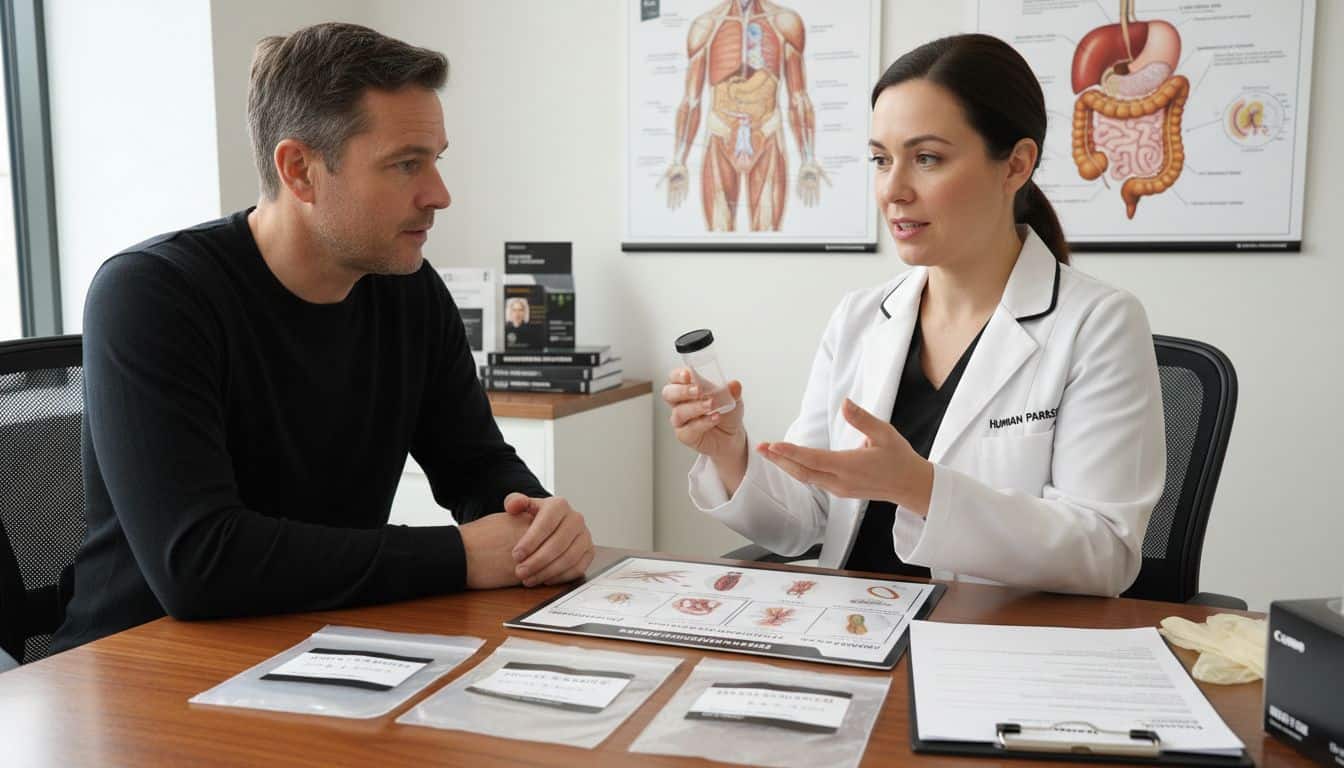Over three billion people worldwide are affected by parasites, often without realizing the cause behind puzzling symptoms. Ignoring the early signs can put your health at risk, leading to ongoing digestive trouble, skin problems, or unexplained fatigue. Learning to spot the right indicators and gather solid evidence can help you take control and find answers faster, guiding you toward timely care and peace of mind.
Table of Contents
- Step 1: Assess Common Symptoms Linked to Parasites
- Step 2: Gather Essential Tools for At-Home Checks
- Step 3: Inspect Physical Signs and Monitor Changes
- Step 4: Collect and Analyze Stool or Sample Evidence
- Step 5: Verify Findings with Professional Testing
Quick Summary
| Key Point | Explanation |
|---|---|
| 1. Recognize common symptoms of parasites | Look for gastrointestinal issues, skin reactions, and systemic signs, like weight loss and fatigue. |
| 2. Use essential tools for home checks | Gather items like a clean collection container and gloves to monitor symptoms effectively. |
| 3. Document physical signs carefully | Keep a detailed symptom journal tracking duration and intensity to aid healthcare consultation. |
| 4. Collect stool samples properly | Follow recommended guidelines by collecting multiple samples to enhance diagnostic accuracy. |
| 5. Seek professional testing for validation | Consult healthcare providers for accurate diagnosis through blood tests, imaging, or stool tests. |
Step 1: Assess Common Symptoms Linked to Parasites
Identifying parasitic infections starts with recognizing the subtle and sometimes complex symptoms that can disrupt your overall health. In this step, we will explore the key indicators that might suggest an underlying parasitic invasion.
According to enviroliteracy.org, parasitic infections manifest through a wide range of symptoms across multiple body systems. Gastrointestinal signs are often the most prominent, including persistent abdominal pain, unexpected diarrhea, frequent nausea, and uncomfortable bloating. Beyond digestive issues, you might experience skin related symptoms such as unexplained rashes, intense itching, or sudden appearance of hives.
Systemic symptoms can be equally telling. Healthline highlights that general weakness, significant weight loss, and lack of appetite are common red flags. Some individuals also report mood changes, disrupted sleep patterns, and muscle pain. More specific parasites might trigger additional symptoms like allergic reactions, intermittent fever, or even rare neurological complications.
Pay close attention to your body and track any persistent or unusual symptoms. While these signs do not definitively confirm a parasite, they serve as critical warning signals that warrant further investigation with a healthcare professional. Your next step will involve preparing for potential diagnostic testing and understanding which symptoms might need immediate medical attention.
Step 2: Gather Essential Tools for At-Home Checks
Detecting parasites at home requires a strategic approach and some specific tools to help you monitor your body’s potential signs of infection. In this step, you will learn about the essential equipment and preparation methods for conducting preliminary parasite checks.
According to myparrotfood.com, effective at-home checks involve several key tools and observational techniques. You will need a clean collection container for stool samples, disposable gloves, a magnifying glass, and good lighting. Prepare a notebook or digital tracking app to log your symptoms and observations carefully. The goal is to document any unusual changes in your digestive patterns, such as diarrhea, abdominal pain, or unexpected weight loss.
Healthline emphasizes that while at-home checks can provide valuable initial insights, they are not a substitute for professional medical diagnosis. Your collection kit should include toilet paper, wet wipes, and a dedicated area for sample collection that maintains hygiene standards. Consider wearing disposable gloves during the inspection process and using a clean, white surface to make any potential parasite fragments more visible.

Remember that these preliminary checks are just the first step. Your gathered information will serve as crucial data for a healthcare professional to conduct more comprehensive diagnostic tests. The next phase involves carefully documenting your findings and preparing to discuss them with a medical expert.
Step 3: Inspect Physical Signs and Monitor Changes
Your body communicates potential parasitic infections through various physical signals that require careful and consistent observation. This step will help you systematically track and evaluate the subtle and sometimes complex indicators of potential parasitic presence.
According to enviroliteracy.org, parasitic infections manifest through multiple body systems with diverse symptoms. Focus on tracking gastrointestinal changes such as persistent abdominal pain, unexpected diarrhea, frequent bloating, and unusual nausea. Additionally, monitor skin conditions including unexplained rashes, intense itching, or sudden appearance of hives. These physical signs can provide critical insights into your body’s potential parasitic response.
Healthline highlights that systemic symptoms are equally important to track. Watch for unexplained weight loss, general weakness, changes in muscle tone, and disrupted sleep patterns. Some specific parasites might trigger more complex symptoms like allergic reactions, intermittent fever, or rare neurological changes. Create a detailed symptom journal documenting the frequency, intensity, and duration of each observed sign.

This systematic approach will provide valuable information for potential medical consultation.
Remember that while self monitoring is important, these physical signs are not definitive proof of parasitic infection. Your careful documentation serves as a crucial first step in understanding your health. The next phase will involve consulting with a healthcare professional who can interpret your observations and recommend appropriate diagnostic testing.
Step 4: Collect and Analyze Stool or Sample Evidence
Detecting parasites requires a systematic and careful approach to collecting and examining biological samples. This crucial step will guide you through the process of safely obtaining and preparing stool samples for potential parasite identification.
According to myparrotfood.com, professional diagnostic protocols recommend collecting multiple stool samples across different days. The Centers for Disease Control suggests gathering three separate samples to increase the likelihood of detecting parasite eggs or larvae. When collecting samples, use a clean, designated collection container and wear disposable gloves to maintain hygiene. Ensure the sample remains uncontaminated by avoiding contact with toilet water and following precise collection instructions.
Healthline emphasizes that stool tests are just one method of diagnosing parasitic infections. While these tests are primary, healthcare professionals might also utilize blood tests, imaging studies, or endoscopic procedures for comprehensive analysis. Store your collected samples in a sealed container and refrigerate them if you cannot immediately deliver them to a medical laboratory. Label each sample with the date and time of collection to help medical professionals track potential changes or patterns.
Remember that home sample collection is a preliminary step. Your carefully collected evidence will provide valuable insights for healthcare professionals to conduct more advanced diagnostic testing. The next phase involves consulting with a medical expert who can interpret your samples and recommend appropriate treatment strategies.
Step 5: Verify Findings with Professional Testing
Moving from initial self assessment to professional medical verification is a critical step in accurately diagnosing potential parasitic infections. This stage transforms your personal observations into scientifically validated medical insights.
Cleveland Clinic recommends consulting your healthcare provider immediately if you suspect a parasitic infection. Your medical professional will design a comprehensive diagnostic strategy tailored to your specific symptoms and potential exposure risks. This typically involves a multi step testing approach that may include stool tests, blood analyses, advanced imaging studies, or potentially an endoscopic examination to confirm the presence and type of parasitic infection.
Healthline emphasizes the complexity of professional parasite testing. Blood tests can identify specific antibodies or antigens, while imaging tests provide visual confirmation of potential parasitic locations within your body. Each diagnostic method serves a unique purpose. Stool tests detect parasite eggs or active organisms, blood tests reveal immune system responses, and imaging studies can locate parasites in specific organ systems. Prepare for your medical consultation by bringing your symptom journal and any home sample collections, which will help your healthcare provider conduct a more thorough and efficient investigation.
Remember that professional testing is the definitive method for confirming parasitic infections. Your careful preparation and documentation will significantly assist medical professionals in developing an accurate diagnosis and targeted treatment plan.

Take Control of Your Health with Trusted Parasite Cleanse Solutions
Struggling with persistent symptoms like unexplained fatigue, digestive discomfort, or skin irritations that might point to parasites? This guide helps you recognize and document those vital warning signs, but taking action is where true relief begins. Many people feel overwhelmed trying to detox naturally while seeking safe and effective support that works in harmony with their body’s needs.

Discover holistic parasite cleanse supplements with pharmaceutical-grade purity at mahoneyinter.com. Our selection includes proven ingredients like ivermectin, fenbendazole, and supportive formulas for liver health and immune boost. Visit our main site now to explore best-sellers, exclusive bundles, and customer testimonials. Start your natural parasite cleansing journey today and regain the vitality you deserve. Don’t wait – your well-being depends on taking the right steps now.
Frequently Asked Questions
How can I recognize symptoms that might indicate a parasitic infection?
Identifying potential parasitic infections starts with recognizing symptoms like persistent abdominal pain, diarrhea, and unusual rashes. Keep a detailed symptom journal to track these indicators over a period of at least two weeks to identify any patterns.
What tools do I need for at-home checks to identify parasites?
Gather essential tools such as a clean collection container for stool samples, disposable gloves, and a magnifying glass. Document your findings meticulously using a notebook or app to keep track of any unusual digestive changes.
How do I properly collect stool samples to check for parasites?
To collect stool samples, use a clean container, wear disposable gloves, and gather multiple samples over different days for the best results. Label each sample with the date and keep them refrigerated until you can deliver them to a medical facility for testing.
What should I do after observing potential symptoms or collecting samples?
After observing symptoms or collecting samples, consult a healthcare professional for a comprehensive evaluation. Bring your symptom journal and any sample evidence to aid in the diagnosis process and follow their recommendations for further testing.
How can I monitor changes in my body that might indicate parasites?
Systematically track changes in your body such as weight loss, disrupted sleep, and skin conditions. Maintain a symptom journal documenting the frequency and intensity of these changes over at least two weeks to provide valuable insights to your healthcare provider.
What types of professional tests will confirm a parasitic infection?
Professional testing may include stool tests, blood analyses, and imaging studies to accurately confirm a parasitic infection. Prepare for your consultation by organizing your symptom journal and any collected samples to assist your healthcare provider in diagnosing your condition.






